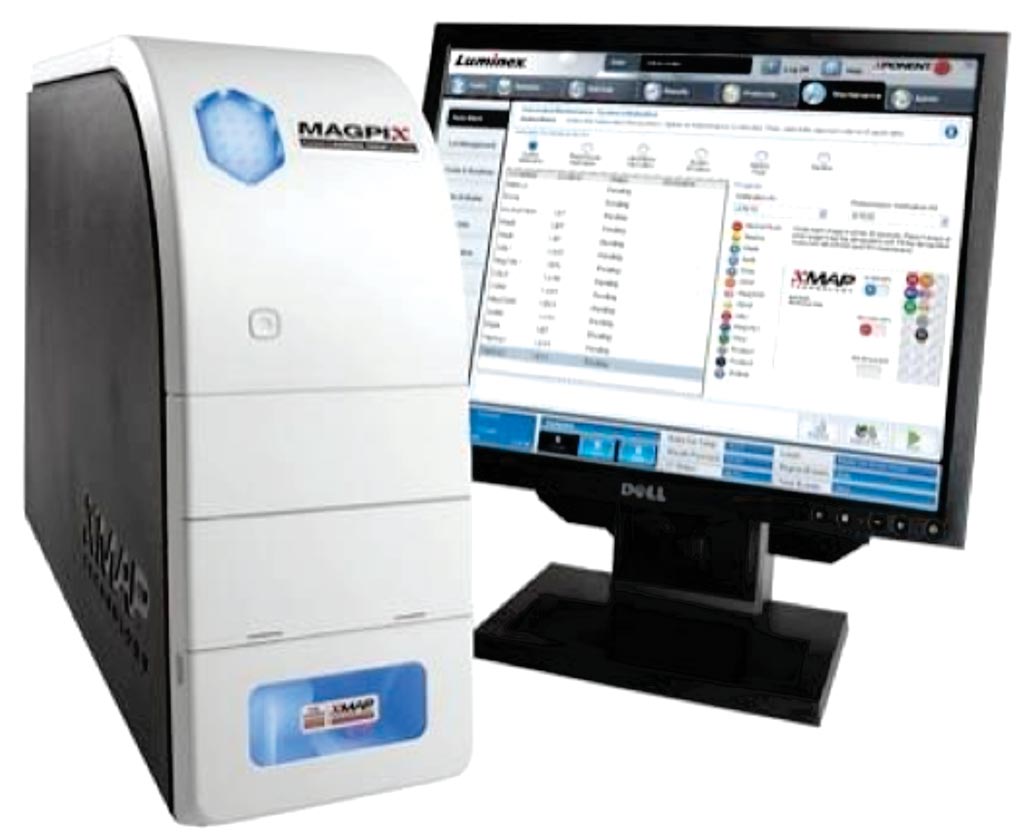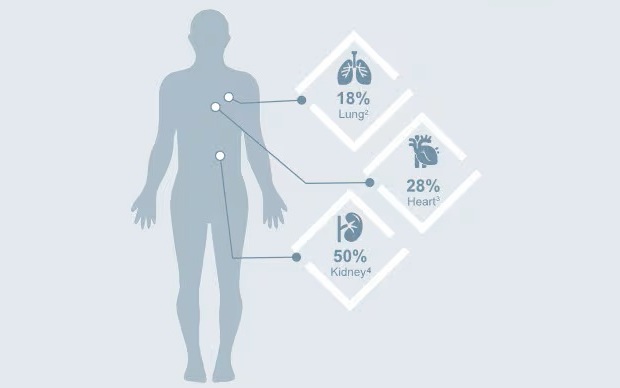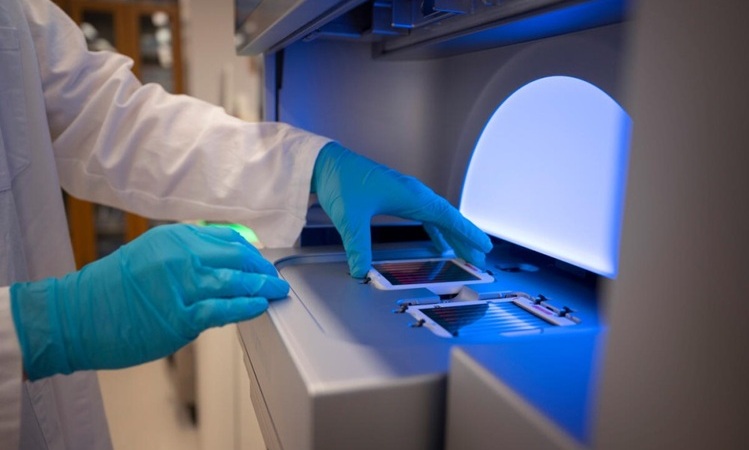Biomarker Low Predictive Power Validated for eGFR Decline
By LabMedica International staff writers
Posted on 06 Sep 2018
Glomerular filtration rate (GFR) is a measure of the function of the kidneys. This test measures the level of creatinine in the blood and uses the result in a formula to calculate a number that reflects how well the kidneys are functioning, called the estimated GFR or eGFR.Posted on 06 Sep 2018
The decline of estimated glomerular filtration rate (eGFR) in patients with type 2 diabetes is variable, and early interventions would likely be cost-effective. The contribution of 17 plasma biomarkers to the prediction of eGFR loss on top of clinical risk factors has been elucidated.

Image: The MAGPIX clinical multiplexing analyzer system (Photo courtesy of Luminex).
A large team of scientists collaborating with the Medical University of Vienna (Vienna, Austria) studied participants in PROVALID (PROspective cohort study in 2,560 patients with type 2 diabetes mellitus for VALIDation of biomarkers), a prospective multinational cohort study of patients with type 2 diabetes and a follow-up of more than 24 months; (baseline median eGFR, 84 mL/min/1.73 m2; urine albumin-to-creatinine ratio, 8.1 mg/g). The 17 biomarkers were measured at baseline in 481 samples using Luminex and enzyme-linked immunosorbent assays (ELISA). The prediction of eGFR decline was evaluated by linear mixed modeling.
The investigators reported that in univariable analyses, nine of the 17 markers showed significant differences in median concentration between stable and fast-progressing patients. A linear mixed model for eGFR obtained by variable selection exhibited an adjusted R2 of 62%. A panel of 12 biomarkers was selected by the procedure and accounted for 34% of the total explained variability, of which 32% were due to five markers. These five biomarkers include Kidney injury molecule 1 (KIM1), Fibroblast growth factor 23 (FGF23), N-terminal pro b-type natriuretic peptide (NTproBNP), hepatocyte growth factor (HGF), and matrix metalloproteinase-1 (MMP1).
The individual contribution of each biomarker to the prediction of eGFR decline on top of clinical predictors was generally low. When included into the model, baseline eGFR exhibited the largest explained variability of eGFR decline (R2 of 79%), and the contribution of each biomarker dropped below 1%.
The authors concluded that in their longitudinal of patients with type 2 diabetes and maintained eGFR at baseline, 12 of the 17 candidate biomarkers were associated with eGFR decline, but their predictive power was low. Given the inferior performance of this highly selected set of biomarkers in early-stage chronic kidney disease patients to predict future eGFR loss, these markers are not likely to be useful for clinical decision-making. The study was published in the September 2018 issue of the journal Diabetes Care.
Related Links:
Medical University of Vienna













